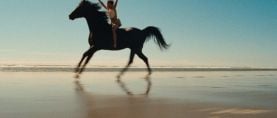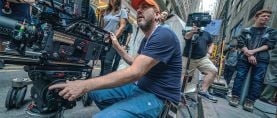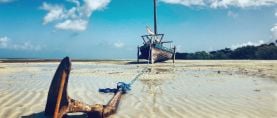
The A.I. and the Nun: Filming Mrs. Davis
Cinematographer Joe Anderson blends the absurd and the sublime in Tara Hernandez and Damon Lindelof's modernist miniseries.
There’s a lot going on in Mrs. Davis: stage magic, real magic, secret lairs in the middle of the desert, industrial espionage, rodeos, sword fights in Medieval castles, motorcycle stunts, exploding heads, an ancient cabal of women warriors sworn to guard the Holy Grail, an omnipresent, omniscient, seemingly omnipotent artificial intelligence named “Mrs. Davis,” and the nun from Reno (“Simone,” played by Betty Gilpin) who wants to bring it down.
“I’m proud that our show is addressing the theme of A.I. versus a more instinctual, messy human world.”
— Joe Anderson
Four of the Peacock limited series’ eight episodes, including the pilot, were photographed by Joe Anderson, whose cinematography credits include the feature The Old Man and the Gun, and Netflix’s Top Boy series. (The other four episodes were shot by Jay Keitel, Xavier Dolléans, AFC, and David Stockton, ASC.) In an interview with AC, Anderson outlines the show’s varied influences, ranging from fine art to slapstick comedy — both of which aptly describe the show's wild vibe.
“There have been a few American Cinematographer articles that have given me shout-outs because I started as a focus puller,” he says. “I worked with Bradford Young [ASC] on Ain’t Them Bodies Saints and with Jody Lee Lipes [ASC] on Martha Marcy May Marlene and some other projects, so it’s a pleasure to be the one being interviewed this time.”
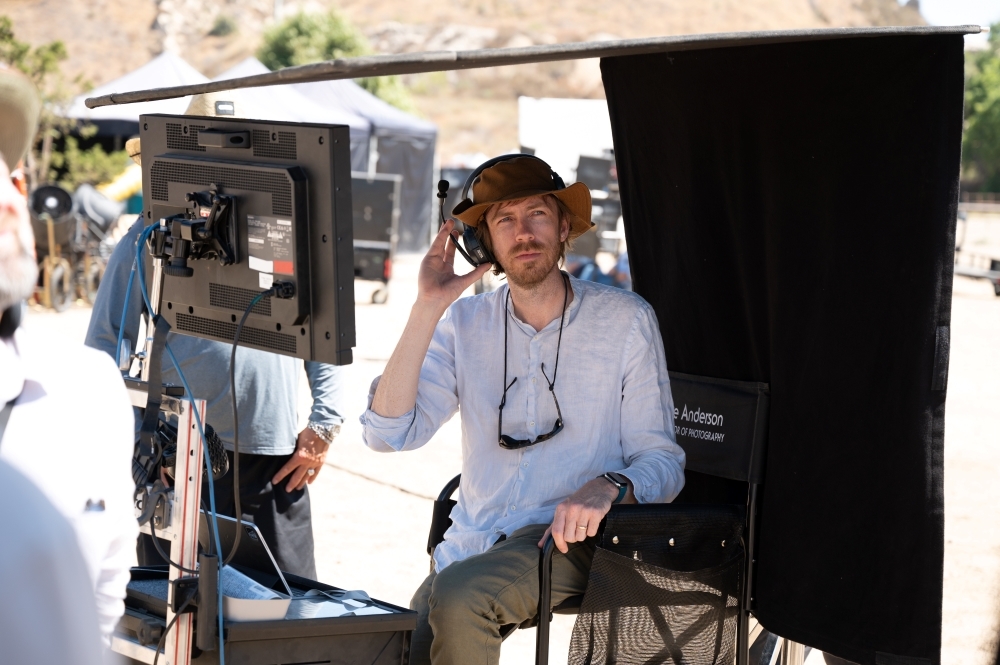
American Cinematographer: Let’s start at the beginning. How did you end up behind the camera on Mrs. Davis?
Joe Anderson: I landed the job because of one specific shot I did for a 2017 movie called The Old Man and the Gun, directed by David Lowery. It’s a Robert Redford movie about an aging bank robber. In one scene, Redford was in the driver’s seat of a car, David was next to him, and I was in the back, operating the camera. We shot this sequence without any other crew, on Super 16 to give it a period feel since it was set in the early ’80s. At one point, I zoomed in and racked focus on Redford’s earpiece. Lowery loved that shot, so he kept it in the film.
Fast forward to 2022, when the director of Mrs. Davis, Owen Harris, who’s known for some of the best Black Mirror episodes, was searching for a cinematographer for his first project in the U.S.. He saw the trailer for The Old Man and the Gun and noticed that shot, which is a significant motif in Mrs. Davis, where we often zoom into characters’ earpieces to visualize the unseen title character. That’s where my relationship with the show began.
There are frequent mentions of Fight Club in the press notes as a visual and thematic reference. Did those influences emerge in your discussions about the desired cinematography for Mrs. Davis?
Fight Club was definitely one of the more significant references, especially in scenes featuring these macho, nerdy characters called the “Durdens,” but I would describe Mrs. Davis more as a Frankenstein-like collage of various genres and well-known projects.
Such as?
When I was interviewing for the project and assembling a look book, I immediately thought of the artist James Rosenquist, whose post-World War II billboard-sized paintings juxtaposed disparate elements of consumer culture, which resonated with the vibe of Mrs. Davis.

We were inspired by the formal compositions of The Sound of Music, another anamorphic film filled with nuns. A chase in the first episode is shot almost exactly like a scene from Buster Keaton’s 1925 short Seven Chances. We were also heavily steeped in Chuck Jones’s animation, particularly the desert sequences. Coincidentally, our production office was located in the same building where the Warner Brothers animators originally drew those cartoons.
A personal favorite influence of mine is Pee-Wee’s Big Adventure. While it might not be a direct visual reference, its spirit of fun is something I like to bring to my projects, and with Mrs. Davis, we wanted to create something exciting, surreal, and unexpected.

There seem to be a lot of recurring motifs, like religious symbols or imagery in the background or part of the framing. At one point, a character wakes from unconsciousness and the out-of-focus bulb filaments in the background form the shape of upside-down crosses. There’s also a shot in the Durdens’ lair, where characters are looking at a stack of monitors that, when viewed from behind, form a cross. One of the last shots in the final episode has a character, Jay, in a single shot with a wall sconce behind him creating a halo-like effect around his head, which feels a lot like a Renaissance painting.
We designed several scenes in the series to be iconic, like a sweeping sunset view of a field filled with pianos. While these dazzling images are in the screenplay, we also wanted to weave in these subtle references to religious iconography throughout the series.
The show often walks a fine line, almost on the verge of breaking the fourth wall, so we had to be discreet. A good example is a shot of a cross with Betty’s shadow in the first episode, a nod to Bram Stoker’s Dracula.
Regarding the scene with Jesus in the falafel shop, we took advantage of these “halo” moments to subtly reference religious iconography. It was one of our last shots in Los Angeles, a poignant scene where he finally has someone serving him, echoing the biblical story of Jesus serving others. We’ve paralleled this in the show with the sandwich metaphor, where Jesus finally gets to eat, after Simone has been the one eating in every other scene.
As the camera pushes in slowly, we were able to capture the potent act of listening, which I believe is one of the most impactful things a cinematographer can do to forge a connection with the audience. The shot was held for quite some time by the editors, adding to its emotional weight. Watching it again, I found myself tearing up; it’s a shot I’m genuinely proud of.

It’s striking how you managed to create that halo effect without altering the set or adding anything; it was already part of the design.
That was one of the challenges of that set. The writers didn’t clearly define whether it’s a real place or a fictional one, so we were pushed to ensure the lighting felt tangible and tactile, but also had a heightened sense of reality.
You could have approached it like a sitcom set, which might have been too on-the-nose, so it was nice to see it handled with such subtlety. Did you shoot all the diner scenes at once?
We shot them somewhat separately because the set was difficult to design, navigating the depiction of reality versus the spiritual. Often, it served as a cover set for bad weather, and its evolution through the series demanded spacing out the shooting. When we finished the final scene in the falafel shop for Episode 8, it was close to the end of the L.A. production. That was a little bittersweet, having to say goodbye to the show and everyone who made it.
I’m curious to know what it was like working in Spain, and how different it might be from working in the U.S.. Also, why there?
We chose Spain because director Owen Harris had worked on several commercials there. It offered a diverse range of shooting locations, accommodating scenes set in Scotland, England, France, the Vatican, Rome, and even some parts of America. But it was a wild transition. The locations and terrain were more logistically complex than working in Burbank. Shooting in old buildings with thick walls posed challenges for our wireless equipment, so we had to go back to plugging in the video cables. But we had a fantastic crew there that really got behind the vibe and energy of the show.
The show’s visuals keep us guessing, adding meta-layers to the storytelling. With so many interesting things going on, what are some of the moments or images that stand out for you?
The opening shot is certainly a highlight. The script begins with an execution in the courtyard of a castle, a powerful moment designed to instantly grab the audience’s attention. We’d planned this shot for months before moving to Spain, having production meetings with the Spanish crew ahead of time. Our chosen location was in Girona, at the top of a steep cobblestone hill — it looked beautiful, but was challenging from a production perspective. We had to use a crane to position our Technocrane, pulleys to hang lights on this 1,000 year-old church, and manage 500 extras in period costumes. It took a good 15 takes, but when all the elements aligned, it felt like we had scored a touchdown.
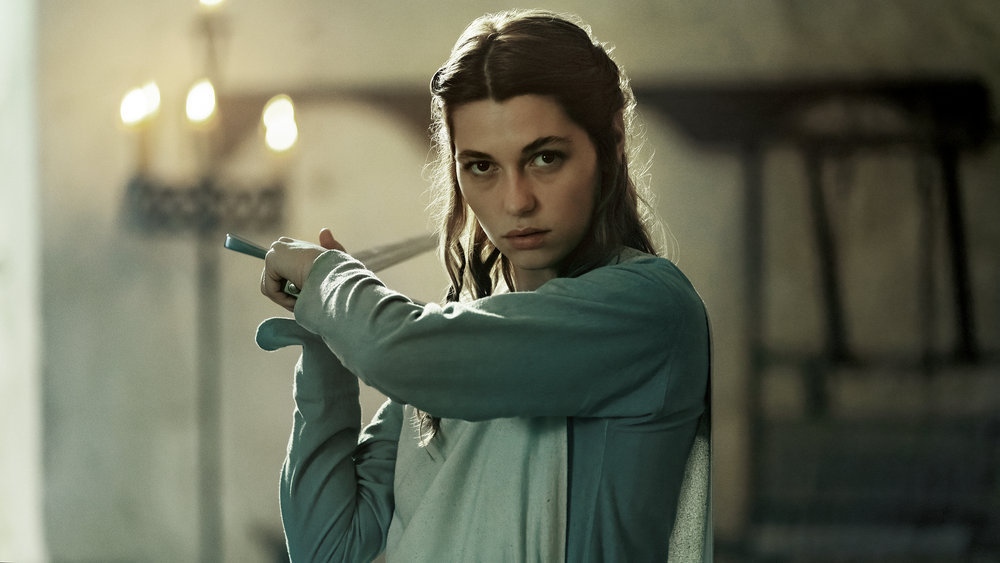
There’s another standout moment from the end of Episode 2. We scripted a beautiful reveal of a field full of pianos, to be shot at a location outside Los Angeles called Mystery Mesa. But five days before shooting, we learned that Christopher Nolan planned to blow up the field for reshoots for Oppenheimer. We found a better spot, basically the same area with a different view. It’s one of the most iconic shots in the series, with all of these magical, surreal, and mysterious elements coming together.
How much of the piano shot was practical versus digital?
We combined both methods. The [art department] and I are proud that we could get 40 pianos out in the field without damaging it anything. We were careful to map out walkable paths for the crew and we were able to gently set down the pianos with a crane. After shooting the dialogue scene first, we got the camera on the Technocrane for the wide shot. This kind of collaborative work leads to thrilling shots, and it's what we live for in filmmaking.
These days, choosing a camera is akin to selecting your palette. I find, from conversations I’ve had, it boils down to personal taste. Does it make a difference for you or the project?
I’m fond of working with Arri’s Alexa, particularly the Alexa LF, in this case. I feel Arri cameras capture motion in a way that comes off looking more like a memory, as opposed to a strict adherence to reality.
When it comes to lenses, cinematographers tend to be more deliberate about their selection to suit the visual language of the project. Was there a specific philosophy behind your choices for Mrs. Davis?
Yes, we wanted something that could capture a slightly nostalgic, slightly surreal feeling, yet not be too imposing on every image. We also wanted to use anamorphic lenses because many of our references had these beautiful anamorphic widescreen presentations.
Through various lens tests and a conversation with Owen, I came across the Caldwell Chameleons. They’re unique lenses because they don’t have the classic anamorphic two-times squeeze, but a 1.79:1 squeeze. You might think that it somehow would look less anamorphic, but the focus falloff doesn’t appear any different, and it allowed us to utilize a larger sensor area than traditional 35mm anamorphic. This is helpful as every streaming service has a 4K mandate, and with Alexa, it can sometimes be tricky to meet the studio's pixel requirement.
Through testing we found that we could use the Chameleons in SC mode [Standard Coverage] as opposed to XC mode [Extended Coverage] on a large-format camera, which met the 4K requirement while also utilizing every bit of the lens circle to maximize the anamorphic character. The way the lens transformed space, giving the edges of frames subtle distortion and creating that slightly larger-than-life image, felt perfect for a show that was also larger than life.
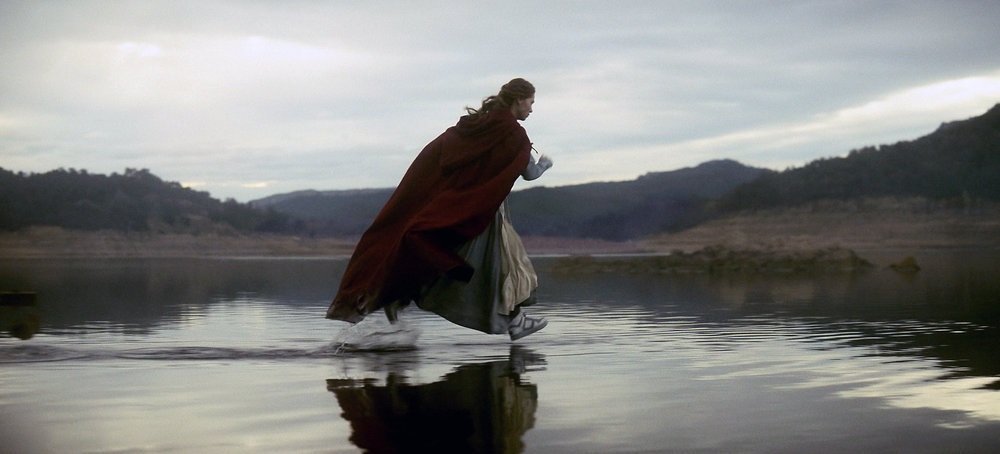
When you’re using the Alexa LF in Super 35 mode, what resolution is that?
We’re in UHD mode, which is 3840 x 2160.
So you’re not utilizing the entire sensor?
That’s correct. We’re using just shy of the full sensor, meeting the essential requirements.
But still, this gives you full range coverage for the lens while using the 1.79:1 squeeze, right, because the purpose of an anamorphic lens is to increase resolution optically.
It’s ironic, because a lot of trendy anamorphic lenses are quite low resolution, sometimes even appearing like standard definition lenses when wide open.
I understand that when shooting film, you might want the sharpest lens optics you could get, but this might not be the requirement for a 4K camera.
Yes, if we had shot in the full-frame mode, we would have lost a lot of character.
Where did you get your camera and lenses?
From Keslow, in Los Angeles. They did a great job sourcing everything we needed, wherever we were in the world, especially when we had big sequences requiring up to five cameras.
Any other lenses worth mentioning?
We used the Angénieux Optimo 12:1 spherical zoom lens. It’s always hard to get anamorphic lenses that match your primes, but I found the 12:1 with a 1.6x extender, which enlarges the image circle and fits 4K requirements, worked really well, especially for night shoots. I could also remove that extender for night shoots and work at a T2.8 in more limited focal range. Making it a very versatile zoom.
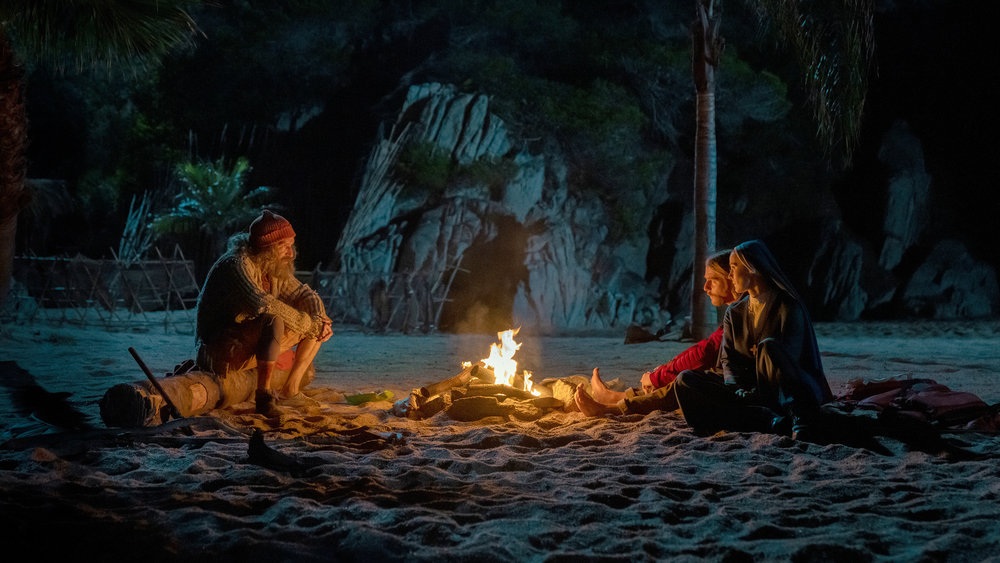
Anything else you’d like to share about your work on the show?
I’m proud that our show is addressing the theme of A.I. versus a more instinctual, messy human world. It’s a concept that resonates with many people, and we wanted our cinematography to reflect this, so we embraced unpredictability and a slightly off-kilter style, emphasizing the human elements of our art.
